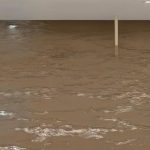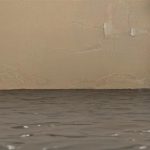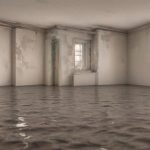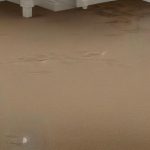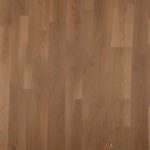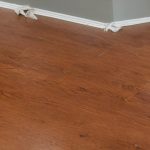Introduction
When it comes to maintaining the integrity and comfort of your home, few things are as concerning as water damage to your carpets. Whether it’s from a leaking pipe, a sewage backup, or a natural disaster, carpet water damage can lead to a host of issues if not addressed promptly and effectively. In this comprehensive guide, we’ll delve into the causes of carpet water damage, the steps to clean and dry a water-damaged carpet, signs of damage to watch out for, and tips to prevent future incidents.
Understanding Carpet Water Damage
Carpet water damage can occur due to various reasons, ranging from clean water leaks to more contaminated sources like sewage backups. It’s crucial to understand the different types of water damage to assess the severity of the situation accurately.
Also Read: Restoring Peace of Mind: Miami Water Damage Restoration Services
Types of Water Damage
- Clean Water Damage: This type of damage typically arises from sources such as rainwater flooding, appliance malfunctions, or broken water lines. Although clean water may seem harmless, it can still wreak havoc on your carpets if not addressed promptly.
- Greywater Damage: Greywater contains moderate contaminants and may result from dishwasher discharge pipes or toilet overflows. While less hazardous than black water, greywater still poses health risks and requires thorough cleaning and drying.
- Blackwater Damage: Perhaps the most concerning type of water damage, black water is highly contaminated and often originates from sewage backups. Carpets affected by black water must be handled with extreme caution and may require professional intervention.
Causes of Carpet Water Damage
Identifying the root causes of carpet water damage is essential for implementing preventive measures. Some common culprits include:
- Plumbing Leaks: Gradual leaks from concealed pipes behind walls or under flooring can saturate carpets over time, leading to extensive damage if left unchecked.
- Foundation and Structural Leaks: Water infiltration through the foundation of a building, especially in basements, can result in widespread carpet water damage during heavy rainfall or flooding events.
- Blocked Gutters: Clogged gutters can cause water to overflow and seep into the home, potentially saturating carpets and causing damage to surrounding structures.
- Sewage Backup: A sewer backup can introduce black water into your home, posing significant health risks and necessitating immediate and thorough cleaning of affected carpets.
Spotting Water Damage on Carpets
Recognizing the signs of water damage early can help mitigate its impact and prevent further deterioration. Keep an eye out for the following indicators:
- Soggy Carpet: If your carpet feels excessively wet or releases water when pressed, it likely has water damage that requires attention.
- Wrinkling or Puckering: Water damage can compromise the adhesive bond between the carpet and the floor, resulting in wrinkles or puckering in the carpet surface.
- Discoloration and Fading: Areas of dark discoloration or fading on the carpet may indicate the presence of mold growth, which thrives in damp conditions.
- Unpleasant Odor: A musty or moldy odor emanating from the carpet is a telltale sign of water damage and potential mold growth underneath.
Cleaning and Drying a Water-Damaged Carpet
Prompt and thorough cleaning and drying are essential for salvaging a water-damaged carpet and preventing mold growth. Here’s a step-by-step guide:
- Extract Water: Remove excess water from the carpet using a pump, wet-dry vacuum, or towels. Prompt action is crucial to prevent further saturation and mold growth.
- Dry the Carpet: Increase air circulation and promote drying by opening windows, using fans, and employing dehumidifiers. If possible, remove the carpet from the floor to expedite the drying process.
- Replace Padding: Damaged carpet padding may need to be replaced to prevent mold growth and ensure the carpet’s structural integrity.
- Disinfect: Thoroughly clean and disinfect the carpet to eliminate any contaminants and inhibit mold growth. Professional cleaning may be necessary for sewage-related water damage.

Preventing Future Incidents
While addressing existing carpet water damage is crucial, taking preventive measures can help minimize the risk of recurrence. Consider the following tips:
- Regular Maintenance: Inspect plumbing fixtures, gutters, and foundations regularly for signs of leaks or blockages.
- Prompt Repairs: Address any plumbing issues or structural concerns promptly to prevent water damage from worsening over time.
- Sump Pump Installation: Installing a sump pump in basements or areas prone to flooding can help mitigate water damage during heavy rainfall or flooding events.
- Professional Inspection: Periodic inspections by water damage restoration professionals can help identify potential issues early and implement preventive measures accordingly.
Also Read: Miami Water Damage Restoration: Restoring Homes and Businesses
Conclusion
Carpet water damage poses significant challenges for homeowners, but with prompt action and proper care, it can be effectively mitigated. By understanding the causes of water damage, recognizing the signs of damage, and following the appropriate cleaning and drying procedures, you can safeguard your carpets and preserve the comfort and safety of your home. Remember, when it comes to carpet water damage, swift and decisive action is key to minimizing the impact and restoring your home to its former glory.


